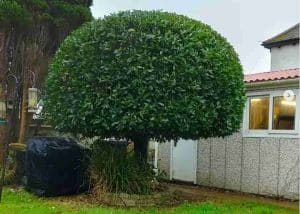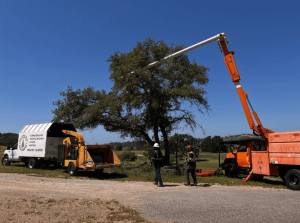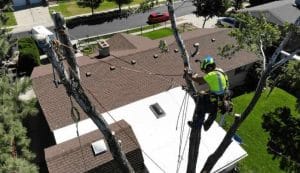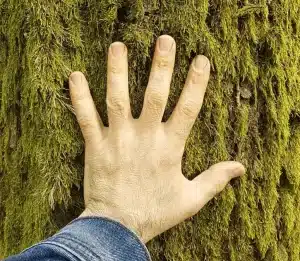Types of tree cutting are the different methods used to cut, shape, or remove trees for safety, health, or appearance. These include pruning, trimming, crown reduction, crown lifting, thinning, pollarding, deadwooding, and complete removal. Each method has its own purpose. Some focus on keeping trees healthy and strong, while others are about preventing hazards or improving the look of your yard.
Trees add value and beauty to any property, but they can also become overgrown or unsafe if not maintained. Learning the types of tree cutting helps you understand the best way to solve common problems such as dangerous branches, blocked sunlight, or unstable trees.
Table of Contents
What Is Tree Cutting?
Tree cutting is the process of removing branches, sections, or entire trees to improve safety, health, or appearance. It can be as simple as trimming back overgrown limbs or as involved as cutting down a tree completely. Unlike general landscaping, tree cutting focuses on solving specific problems such as preventing property damage, removing hazards, or shaping trees for better growth.
The goal of tree cutting isn’t always to remove a tree. In many cases, it’s about managing how the tree grows, keeping it strong and healthy, and making your yard safer and more attractive.

1. Tree Pruning
Tree pruning is one of the most common types of tree cutting. It focuses on removing smaller branches to improve tree health and shape.
When It’s Needed
- To remove dead or diseased branches
- To improve airflow and sunlight reaching lower parts of the tree
- To reduce the risk of branches falling during strong winds
- To guide the growth of young trees
Benefits
Pruning encourages stronger, healthier growth. It also helps your tree look well-shaped, which adds beauty to your property. From a safety perspective, pruning lowers the chance of weak branches falling onto your house, car, or people below.
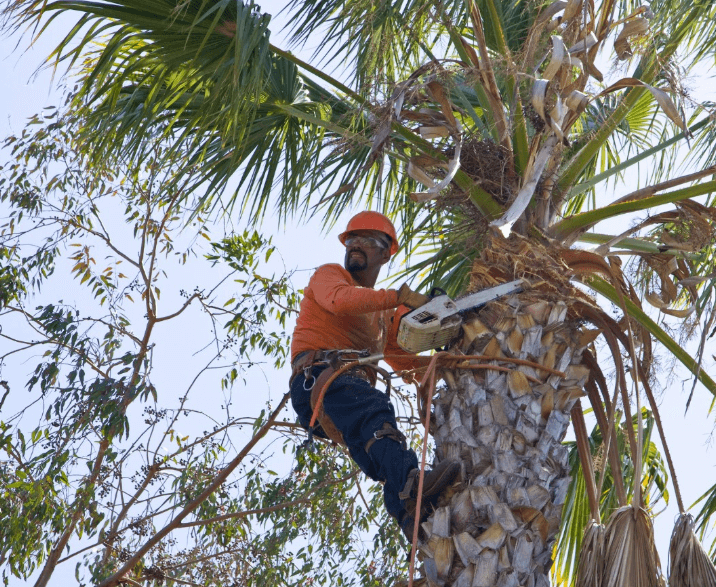
2. Tree Trimming
Tree trimming is often confused with pruning, but it has a slightly different goal. While pruning focuses on health, trimming focuses on appearance and structure.
When It’s Needed
- To shape trees for landscaping purposes
- To keep branches from growing into power lines
- To create a more balanced look in your yard
Benefits
Trimming makes trees look neat and attractive. It also prevents them from growing into unwanted areas, which is especially useful in residential neighborhoods where space is limited.
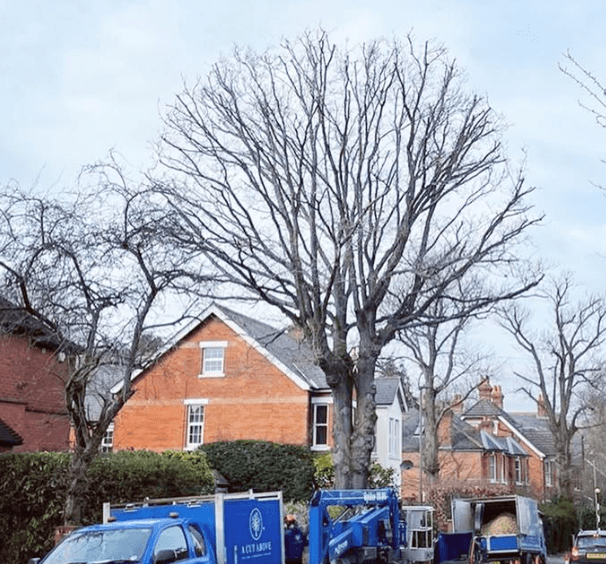
3. Crown Reduction
Crown reduction is a type of tree cutting that reduces the height or spread of the tree’s canopy.
When It’s Needed
- When a tree has grown too tall and poses a risk of breaking in storms
- To prevent branches from interfering with nearby structures
- To reduce shade that prevents grass or garden plants from growing
Benefits
Crown reduction helps keep large trees safe without removing them completely. Instead of cutting the whole tree down, you keep it healthy but more manageable.
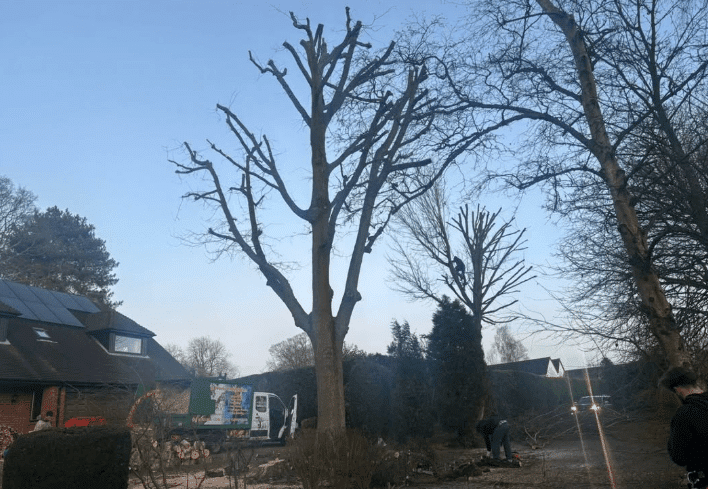
4. Crown Thinning
Crown thinning involves selectively removing branches throughout the canopy to reduce weight and increase light penetration.
When It’s Needed
- If your tree is dense and heavy with branches
- When lower plants in your yard don’t get enough sunlight
- To make trees less likely to blow over in storms
Benefits
By thinning the crown, you make the tree lighter, stronger, and less likely to suffer storm damage. It also improves the health of your lawn or garden by letting in more light.
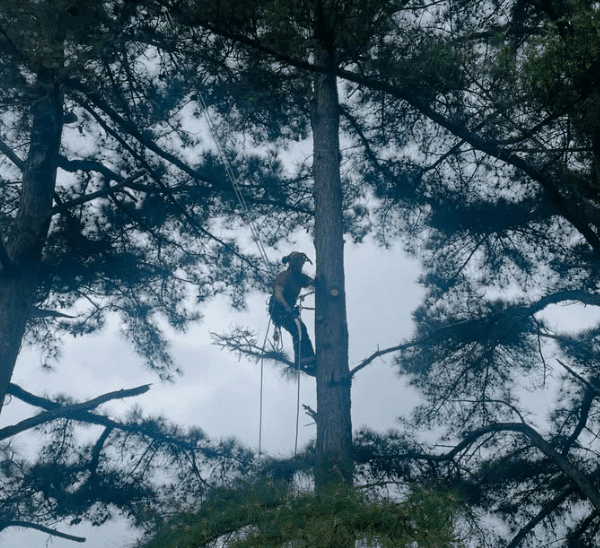
5. Crown Lifting
Crown lifting removes the lower branches of a tree to raise the clearance between the ground and the canopy.
When It’s Needed
- When branches block driveways, sidewalks, or pathways
- If you need more headroom under the tree for vehicles or people
- To let more sunlight reach your yard or garden
Benefits
Crown lifting improves accessibility and creates a cleaner, more open look. It’s especially useful for homeowners with large shade trees in front yards or along driveways.
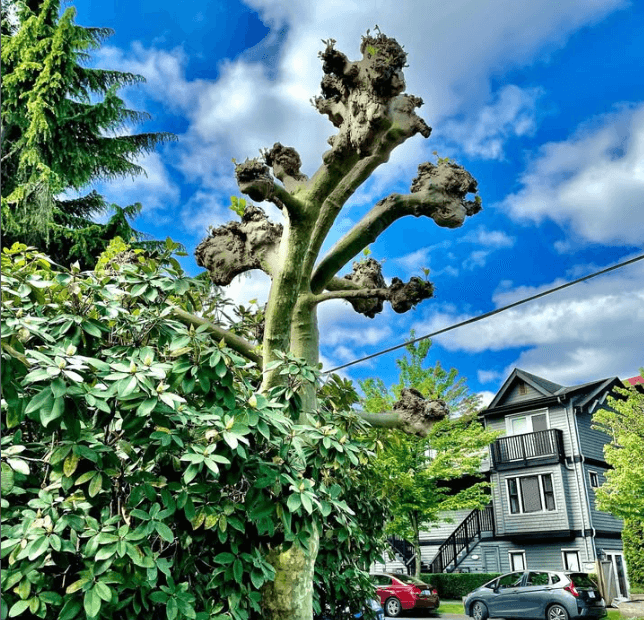
6. Pollarding
Pollarding is a special type of tree cutting where the upper branches are cut back to promote a dense head of new growth.
When It’s Needed
- For trees in urban areas where space is limited
- To control the size of fast-growing trees
- For decorative purposes in landscape design
Benefits
Pollarding helps keep trees smaller, easier to manage, and visually appealing. It’s often used in cities where trees need to be maintained regularly for safety and space.
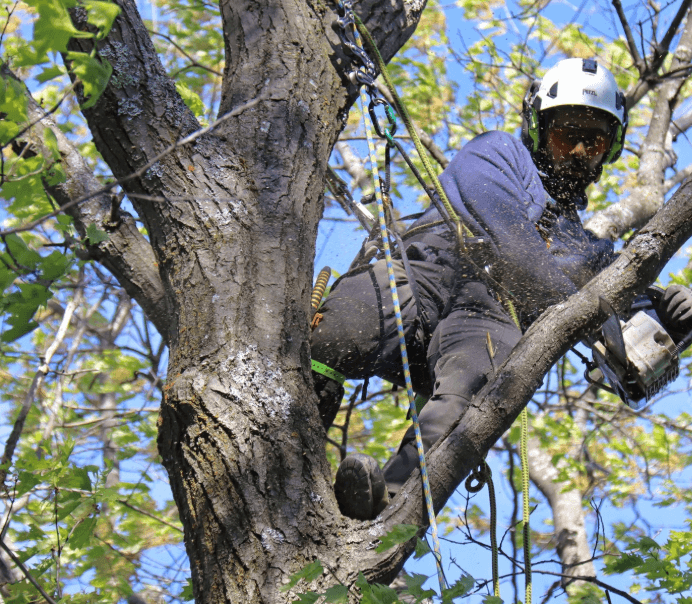
7. Deadwooding
Deadwooding involves removing dead, dying, or broken branches.
When It’s Needed
- When dead branches pose a safety risk
- To stop pests and insects from invading the tree
- To improve the overall appearance of the tree
Benefits
This type of tree cutting is essential for safety. Deadwood can fall at any time, especially during storms, creating hazards for people and property. Removing it also helps the tree stay healthy.

8. Tree Felling
Tree felling is the complete removal of a tree, cutting it down from the base.
When It’s Needed
- When a tree is dead or diseased beyond recovery
- If a tree leans dangerously and threatens property
- To clear space for construction or landscaping projects
Benefits
Although it’s a last resort, tree felling eliminates major safety hazards and creates open space for new landscaping. It must be done carefully by skilled professionals to avoid damage to nearby structures.

9. Sectional Felling
In tight spaces where a tree can’t be felled in one piece, sectional felling is used. The tree is cut down in sections, starting from the top.
When It’s Needed
- In urban or suburban areas with nearby houses, fences, or power lines
- When a large tree must be removed safely in a small space
Benefits
This method ensures maximum safety and control. By removing the tree in sections, the risk of accidental damage is reduced.
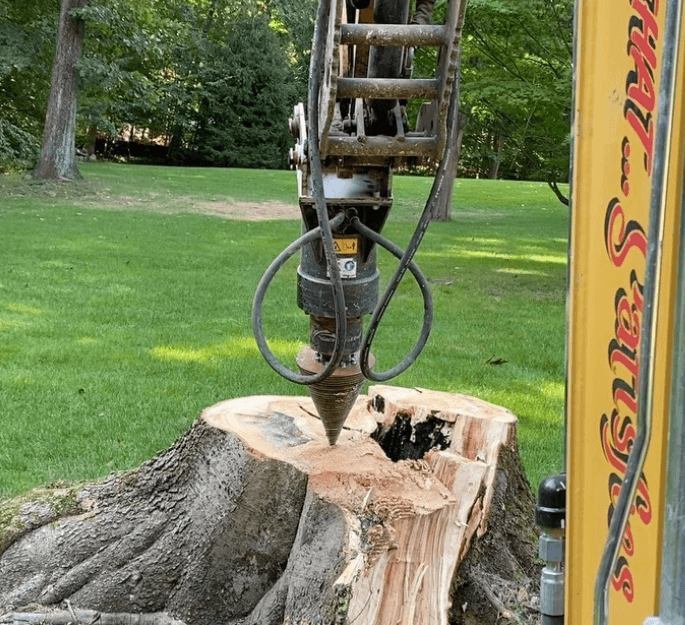
10. Stump Removal and Grinding
After tree felling, the stump often remains. Stump removal or stump grinding eliminates this problem.
When It’s Needed
- To prevent tripping hazards in the yard
- To stop new shoots from growing back
- To free space for planting grass, flowers, or another tree
Benefits
Removing stumps makes your yard safer and more attractive. Grinding the stump below ground level also allows you to reuse the space.
Safety Considerations for Tree Cutting
No matter which type of tree cutting is used, safety is always a top priority. Cutting large branches or entire trees involves heavy tools and sometimes working at dangerous heights. Common safety measures include:
- Using proper protective equipment (helmets, gloves, safety glasses)
- Following correct cutting techniques
- Avoiding work near power lines without professional help
- Having clear escape routes when felling a tree
For homeowners, the key is to understand the options, but leave the risky jobs to trained experts.
Environmental Impact and Responsible Cutting
Tree cutting should always be done responsibly. Over-cutting can damage trees and reduce their lifespan. Responsible cutting means:
- Only removing what is necessary for safety or health
- Recycling branches into mulch or compost
- Considering tree replacement after full removal
This way, you balance safety and beauty with long-term sustainability.
Choosing the Right Type of Tree Cutting
The right choice depends on your situation:
- For safety hazards – Deadwooding, pruning, or felling may be required.
- For appearance and landscaping – Trimming, crown reduction, or pollarding work best.
- For space and access – Crown lifting or sectional felling may be the solution.
Think about your goal first: Do you want safety, beauty, or more open space? The answer will guide you toward the best method.
Conclusion: Healthy, Safe, and Beautiful Trees
Understanding the types of tree cutting helps homeowners make better decisions for their property. From pruning and trimming to full tree removal, each method serves a unique purpose. Choosing the right approach can keep your yard safe, improve the look of your landscape, and extend the life of your trees.
Whether you need a small trim or a complete removal, knowing the options gives you confidence to move forward. Tree cutting is not just about removing wood, it’s about creating a safe, healthy, and welcoming environment for your home and family.
FAQs
What is tree cutting?
Tree cutting is the process of removing branches, sections, or entire trees to improve safety, health, or appearance. It includes methods like pruning, trimming, and full removal depending on the situation.
Why is tree cutting important?
It prevents hazards from falling branches, protects property from damage, improves the health of trees, and keeps your yard looking neat and safe.
What are the main types of tree cutting?
The most common types are pruning, trimming, crown reduction, crown thinning, crown lifting, pollarding, deadwooding, sectional felling, and complete removal.
When should I consider tree cutting?
You should consider it if a tree has dead or diseased branches, is leaning dangerously, blocking sunlight, growing into power lines, or becoming too large for the space.
What is the difference between pruning and trimming?
Pruning focuses on tree health by removing dead or weak branches, while trimming focuses on shaping the tree for appearance and structure.
Is tree cutting safe to do myself?
Small branch trimming may be safe for homeowners, but larger jobs, especially near power lines or rooftops, should always be handled by professionals.
What happens if you don’t cut trees?
Trees may become overgrown, develop weak or dangerous branches, and increase risks of property damage or personal injury during storms.
Does tree cutting kill the tree?
No, when done correctly, tree cutting helps trees stay healthy. However, improper cutting or over-pruning can weaken or kill a tree.
What is tree felling?
Tree felling is the complete cutting down of a tree from the base, usually done when a tree is dead, diseased, or poses a major safety risk.
What should I do with tree stumps after cutting?
Stumps can be removed or ground down to prevent regrowth, eliminate tripping hazards, and free up space for landscaping.
